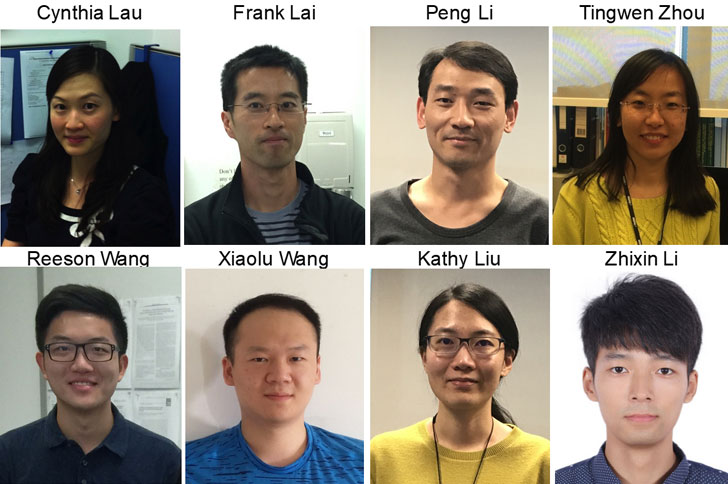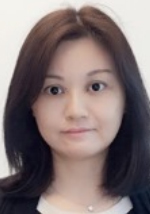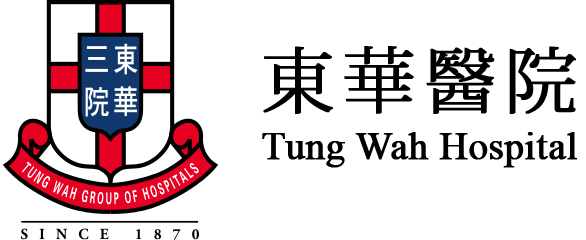Professor Elly Sau-Wai NGAN 顏秀慧
Research interests
- Molecular and cellular biology
- Disease modeling
Neural crest cells (NCCs) are highly migratory stem cells, which give rise to the entire peripheral nervous system (PNS), smooth muscle of major blood vessels, cartilage and bone of the face, endocrine cells in the thyroid and adrenal glands and melanocytes of the skin. Hence, defects in NC development in human yield a large array of diseases, accounting for most of the human congenital disorders.
Our group focuses mainly on NC and PNS development, particularly on two common NC associated diseases: Hirschsprung's disease (HSCR; colonic aganglionosis) and neuroblastoma (NB). HSCR is attributed to a failure of enteric NCC to fully colonize the gut, leading to absence of ganglion in the bowel, while NB is the most common childhood solid tumor derived from improperly differentiated NCCs in adrenal glands and sympathetic nervous system.
Use of patient specific iPSC for studying human neural crest development and disease etiology for HSCR
Early stages of human gestation are virtually inaccessible for experimental research, making human induced pluriopotent stem cell (iPSC) culture a unique model for studying the development of human NC lineages and the associated diseases. To date, with defined differentiation conditions, iPSC can be dictated to form neural rosettes that comprise cells expressing early neuroectodermal markers. Importantly, in response to appropriate developmental patterning cues, these neuroepithium-like cells are capable of progressing toward different NC lineages and differentiating into varied region-specific neural and non-neural NC derivatives.
To convert knowledge from the genetic findings into HSCR etiology, we will use hESC as a platform and CRISPR technology to introduce DNA variants into hESCs. Mutant hESC lines that differ from the parental line in only the single mutation of interest will minimize confounding affects of differences in genetic background between patients and controls. Similarly, CRISPR genome editing platform will be used to "correct" the DNA variant to directly demonstrate their relevance to the disease phenotypes.
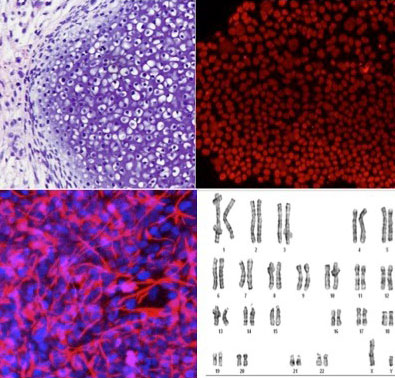
Molecular basis of the enteric nervous system development and Hirschsprung disease
Early stages of human gestation are virtually inaccessible for experimental research, making human induced pluriopotent stem cell (iPSC) culture a unique model for studying the development of human NC lineages and the associated diseases. To date, with defined differentiation conditions, iPSC can be dictated to form neural rosettes that comprise cells expressing early neuroectodermal markers. Importantly, in response to appropriate developmental patterning cues, these neuroepithium-like cells are capable of progressing toward different NC lineages and differentiating into varied region-specific neural and non-neural NC derivatives.
To convert knowledge from the genetic findings into HSCR etiology, we will use hESC as a platform and CRISPR technology to introduce DNA variants into hESCs. Mutant hESC lines that differ from the parental line in only the single mutation of interest will minimize confounding affects of differences in genetic background between patients and controls. Similarly, CRISPR genome editing platform will be used to "correct" the DNA variant to directly demonstrate their relevance to the disease phenotypes.
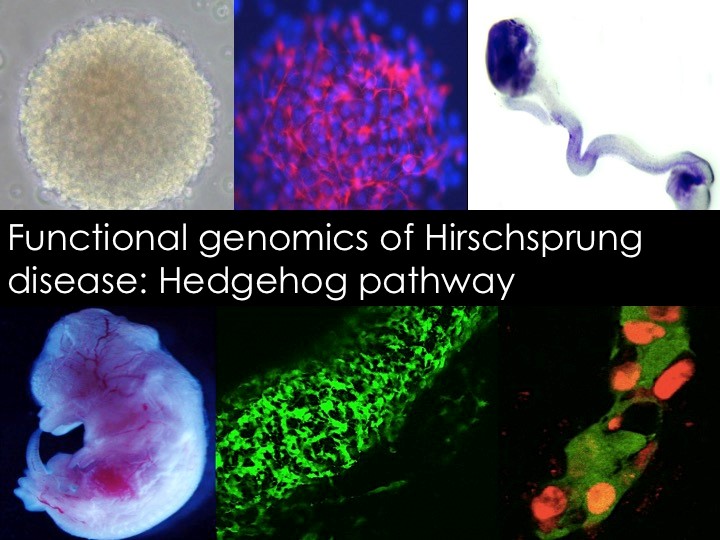
Neuroblastoma tumor initiating cells and tumor behavior
Under the framework of cancer stem cell (CSC) or tumor initiating cell (TIC) hypothesis, cancer cells are hierarchically organized in a tumor bulk. TICs give rise to phenotypically heterogeneous progenies, contributing to the wide range of clinical presentations and non-uniform response to the treatment of NB. Fibromuscular and glial lineage commitment of TIC favors tumor regression and maturation, respectively, whereas differentiation to the neuronal lineage results in a malignant tumor progression.
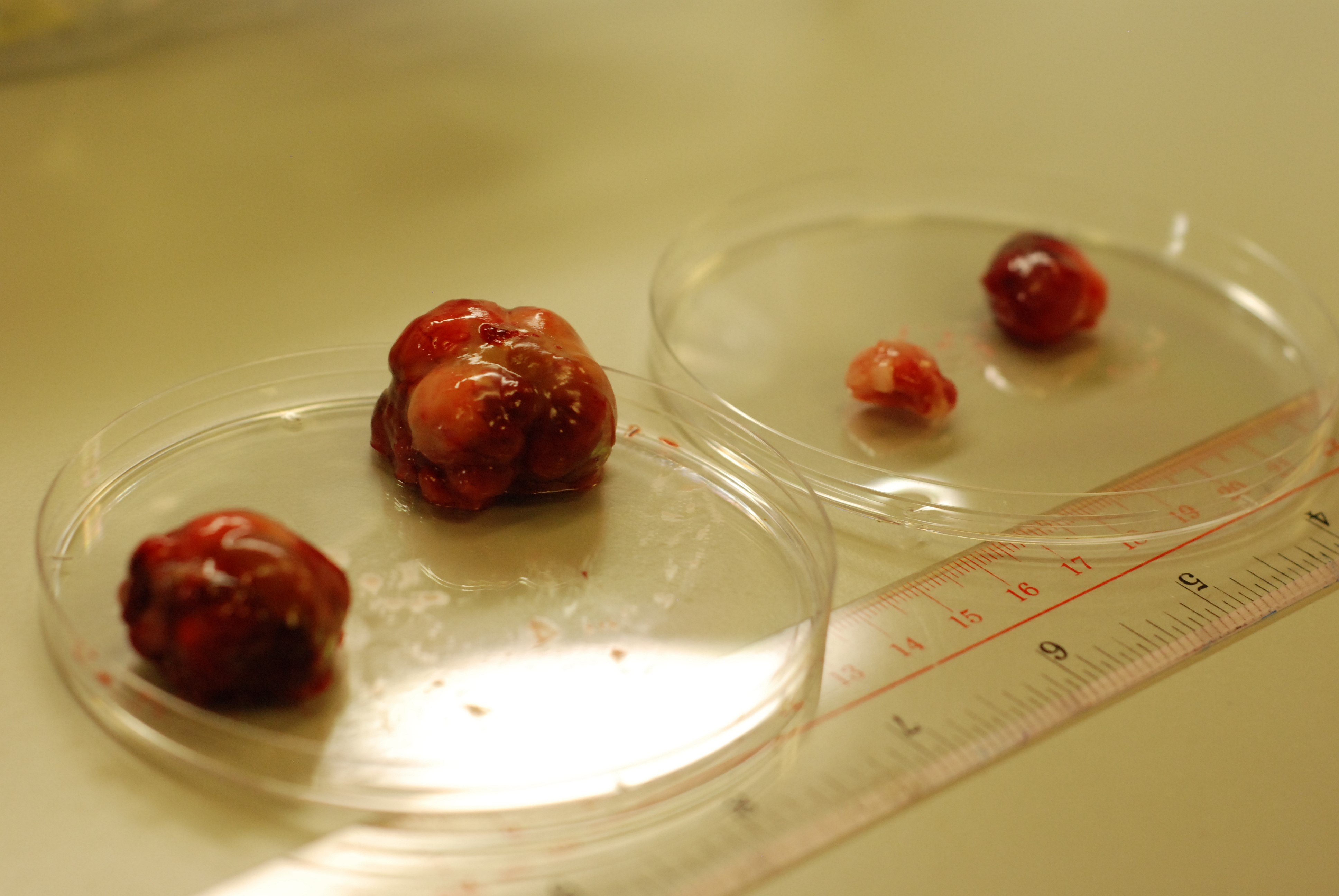
Selected publications
Research articles
Lai, F.P., Lau, S.T., Wong, J.W, Gui, H., Wang, X.R., Zhou, T., Lai, W.H., Tse, H.F., Tam, P.K., Garcia-Barcelo, M.M., Ngan, E.S.* Correction of Hirschsprung-associated Mutations in Human Induced Pluripotent Stem Cells, via CRISPR/Cas9, Restores Neural Crest Cell Function. 2017 Gastroenterology. 153(1):139-153.e8. IF: 18.392 [Pubmed]
Liu JA, Lai FP, Gui H, Sham MH, Tam PK, Garcia-Barcelo MM, Hui CC, Ngan ES.* 2015. Identification of GLI Mutations in Patients with Hirschsprung Disease That Disrupt Enteric Nervous System Development in Mice. Gastroenterology. 2015 1837-1848.e5. IF: 18.392 [PubMed]
Lau ST, Hansford LM, Chan WK, Chan GC, Wan TS, Wong KK, Kaplan DR, Tam PK, Ngan ES.* Prokineticin signaling is required for the maintenance of a de novo population of c-KIT+ cells to sustain neuroblastoma progression. Oncogene 2015 34: 1019-1034. IF: 8.559 [PubMed]
Lau, S.T., Zhou, T., Liu, J.A., Fung, E.Y., Che, C.M., Lang, B. H., Ngan ES.* 2015. Dysregulation of Clathrin promotes thyroid cell growth and contributes to multinodular goiter pathogenesis. BBA-Molecular Basis of Disease, 852:1676-1686. IF:5.089 [PubMed]
Shum CK, Lau ST, Tsoi LL, Chan LK, Yam JW, Ohira M, Nakagawara A, Tam PK, Ngan ES.* Kruppel-like factor 4 (KLF4) suppresses neuroblastoma cell growth and determines non-tumorigenic lineage differentiation. Oncogene 2013 32(35):4086-99. IF: 8.559 (PubMed)
Ngan ES*, Garcia-Barceló MM, Yip BH, Poon HC, Lau ST, Kwok CK, Sat E, Sham MH, Wong KK, Wainwright BJ, Cherny SS, Hui CC, Sham PC, Lui VC, Tam PK. Hedgehog/Notch-induced premature gliogenesis represents a new disease mechanism for Hirschsprung disease in mice and humans. J Clin Invest. 2011; 121(9):3467-78. IF:15.387 (PubMed).
Ngan ES*, Lang BH, Liu T, Shum CK, So MT, Lau DK, Leon TY, Cherny SS, Tsai SY, Lo CY, Khoo US, Tam PK, Garcia-Barceló MM. A germline mutation (A339V) in thyroid transcription factor-1 (TITF-1/NKX2.1) in patients with multinodular goiter and papillary thyroid carcinoma. J Natl Cancer Inst. 2009; 101(3):162-75. IF: 15.678 (PubMed).
Garcia-Barcelo MM, Tang CS, Ngan ES, Lui VC, Chen Y, So MT, Leon TY, Miao XP, Shum CK, Liu FQ, Yeung MY, Yuan ZW, Guo WH, Liu L, Sun XB, Huang LM, Tou JF, Song YQ, Chan D, Cheung KM, Wong KK, Cherny SS, Sham PC, Tam PK. Genome-wide association study identifies NRG1 as a susceptibility locus for Hirschsprung's disease. Proc Natl Acad Sci U S A. 2009; 106(8):2694-9. IF:9.77 (PubMed).
Ngan ES*, Shum CK, Poon HC, Sham MH, Garcia-Barcelo MM, Lui VC, Tam PK. Prokineticin-1 (Prok-1) works coordinately with glial cell line-derived neurotrophic factor (GDNF) to mediate proliferation and differentiation of enteric neural crest cells. Biochim Biophys Acta. 2008;1783(3):467-78. IF:6.9 (PubMed).
Ngan ES*, Lee KY, Sit FY, Poon HC, Chan JK, Sham MH, Lui VC, Tam PK. Prokineticin-1 modulates proliferation and differentiation of enteric neural crest cells. Biochim Biophys Acta. 2007; 1773(4):536-45. IF:6.9 (PubMed).
Ngan ES*, Sit FY, Lee K, Miao X, Yuan Z, Wang W, Nicholls JM, Wong KK, Garcia-Barcelo M, Lui VC, Tam PK. Implications of endocrine gland-derived vascular endothelial growth factor/prokineticin-1 signaling in human neuroblastoma progression. Clin Cancer Res. 2007; 13(3):868-75. IF:6.75 (PubMed).
Ngan ES*, Lee KY, Yeung WS, Ngan HY, Ng EH, Ho PC. Endocrine gland-derived vascular endothelial growth factor is expressed in human peri-implantation endometrium, but not in endometrial carcinoma. Endocrinology. 2006; 147(1):88-95. IF:5.3 (PubMed).
Ngan ES, Hashimoto Y, Ma ZQ, Tsai MJ, Tsai SY. Overexpression of Cdc25B, an androgen receptor coactivator, in prostate cancer. Oncogene. 2003; 22(5):734-9. IF 7.41 (PubMed).
Ngan ES, Ma ZQ, Chua SS, DeMayo FJ, Tsai SY. Inducible expression of FGF-3 in mouse mammary gland. Proc Natl Acad Sci U S A. 2002; 99(17):11187-92. IF 9.77 (PubMed).
Ma ZQ, Liu Z, Ngan ES, Tsai SY. Cdc25B functions as a novel coactivator for the steroid receptors. Mol Cell Biol. 2001; 21(23):8056-67. IF 6.19 (PubMed).
Invited review articles
Ngan ES 2015 Heterogeneity of neuroblastoma. Oncoscience [PubMed]
Liu, J.A, Ngan ES.* 2013. Hedgehog and Notch signaling in enteric nervous system development. Neurosignals, 22(1):1-13. IF:4.03[PubMed]
Ngan ES, Kim KH, Hui CC. Sonic Hedgehog Signaling and VACTERL Association. Mol Syndromol. 2013 4(1-2):32-45. [PubMed]
Yung JS, Tam PK, Ngan ES.* Pluripotent stem cell for modeling neurological diseases. Exp Cell Res. 2013 319(2):177-84. [PubMed]
Chow KHM, Tam PKH, Ngan ES.* Neural crest and Hirschsprung's disease. 2012. Stem Cells and Human Diseases. Srivastava, Rakesh K.; Shankar, Sharmila (Eds.) Springer. ISBN 978-94-007-2800-4. (PubMed).
Ngan ES* and Tam PKH. Prokineticin signalling pathway. 2008 Int. J Biochem Cell Biol 40: 1679–1684. IF:4.8 (PubMed).
Chua SS, Ma ZQ, Ngan ES, Tsai SY. Cdc25B as a steroid receptor coactivator. 2004 Vitamin and Hormone; 68:231-56. IF:4.4 (PubMed).
Ngan ES, Schillinger K, DeMayo F, Tsai SY. 2002 The mifepristone-inducible gene regulatory system in mouse models of disease and gene therapy. Semin. Cell Dev. Biol. 13(2):143-9. IF:8.6 (PubMed).
*Corresponding author
External Grants
| 2017-2020 | LDS Seed Funding for Stem Cell and Regenerative Medicine Research (LDS-IS-2016/17) Impactful scheme: Neural crest cells and enteric nervous system: development, disease modeling and tissue repair. HK$3,000,000 (PI) |
| 2017-2019 | UICP (UIM/299): Establishment of new treatment strategy for neurological diseases using patient specific induced pluripotent stem cells and high-resolution single cell sequencing. HK$7,600,000 (co-PI) |
| 2017-2019 | GRF HKU17112416: Kinesin family member protein 7 (KIF7) in ciliopathy associated gut motility disorders. HK$961,033 (PI) |
| 2016-2018 | HMRF 03143236: Reading Hedgehog signaling in enteric neural crest cells: implications in Hirschsprung disease. HK$1,200,000 (PI) |
| 2015-2018 | GRF HKU 17109215: Genetic interaction between SUFU, GLI2 and βTrCP in medulloblastoma tumorigenesis. HK$969,066 |
| 2015-2017 | HMRF 02132396: Human stem cell based model for studying neuronal versus glial lineage differentiation of neural crest cells: implication in Hirschsprung disease. HK$1,000,000 |
| 2015-2017 | GRF HKU17116914: Genetic analysis of interaction between Sufu, Gli and Sox10 in Hedgehog mediated gliogenesis of enteric neural crest cells. HK$748,278 |
| 2015-2019 | TRS T12C-714/14: Genetics and functional genomics of neural crest stem cells and associated disease: Hirschsprung disease (co-PI). HK$62,360,000 |
| 2012-2015 | SK Yee Medical Research Foundation: Neural crest derived cells: Role in functional repair in the nervous system (co-PI). HK$50,000,000 |
| 2011-2014 | Children Cancer Foundation: Krüppel-like factor 4 in neuroblastoma regression: from clinic to lab and back to clinic (PI). HK$ 500,000 |
| 2011-2013 | GRF HKU 775710M: Premature gliogenesis of enteric neural crest cells induced by aberrant Sonic hedgehog-Notch signalling: a cause of Hirschsprung disease? HK$ 1,200,000 |
| 2010-2011 | GRF HKU 7739/09M: Prokineticin signaling in neuroblastoma. HK$755,760 |
| 2009-2011 | GRF HKU 7728/08M: Thyroid transcription factor-1 (TTF-1), a potential susceptibility gene for familial papillary thyroid carcinoma. HK$1,512,274 |
| 2007-2010 | National basic research fund 973 2007CB914801: Multiple approaches to gain insight into neuroblastoma regression (co-PI). RMB300,000 |
Awards and Honors
| 2017 | International Society of Differentiation – Sessions/ Symposia Organization (ISDSO) Award by the International Society of Differentiation |
| 2015 | The Best Research Output Prize, Department of Surgery |
| 2015 | The Best Research Output Prize, SRT of Development & Reproduction |
| 2013 | Travel grant award, The Japanese Cancer Association, Japan |
| 2012 | Outstanding Basic Research Paper, Department of Surgery, University of Hong Kong |
| 2011 | Young invited speaker award, Asia Interchange Scholarship Japan Fund, Japan |
| 2011 | SRT D & R Best Research Output Award, University of Hong Kong |
| 2008 | Outstanding Presentation Award, 1st class. The 3rd Cross-strait Symposium on Pediatric Oncology, Shanghai, China |
| 2008 | International Travel Grant Award, ANR2008, Asian Children's Care League - JAPAN (ACCL), Chiba, Japan |
| 2007 | Outstanding Presentation Award, 12th World Congress on Advances in Oncology and 10th International Symposium on Molecular Medicine, Greece. |
| 2007 | The Best Poster Presentation, MGH-HKU-Nature China Forum 2007, HK |
| 2002 | Travel Award, Endocrine Society, Endo 2002, San Francisco, CA |
| 2001 | AstraZeneca Travel Grant Award, Endocrine Society, Endo 2001, Denver, CO |
| 2000-2002 | Croucher Foundation Fellowship, Hong Kong |
| 1998-1999 | J.G. Philips Memorial Scholarship, HK |
| 1999 | Travel Grant from the Society for the Study of Endocrinology, Metabolism and Reproduction, HK |
Editorship
Editorial board member of:
Scientific Reports (Board area: Stem Cells and Development) by Nature group (IF:5.578)
The Journal of Pediatric Biochemistry
International Journal of Gastroenterology Disorders & Therapy ISSN: 2393-8498
The Team
